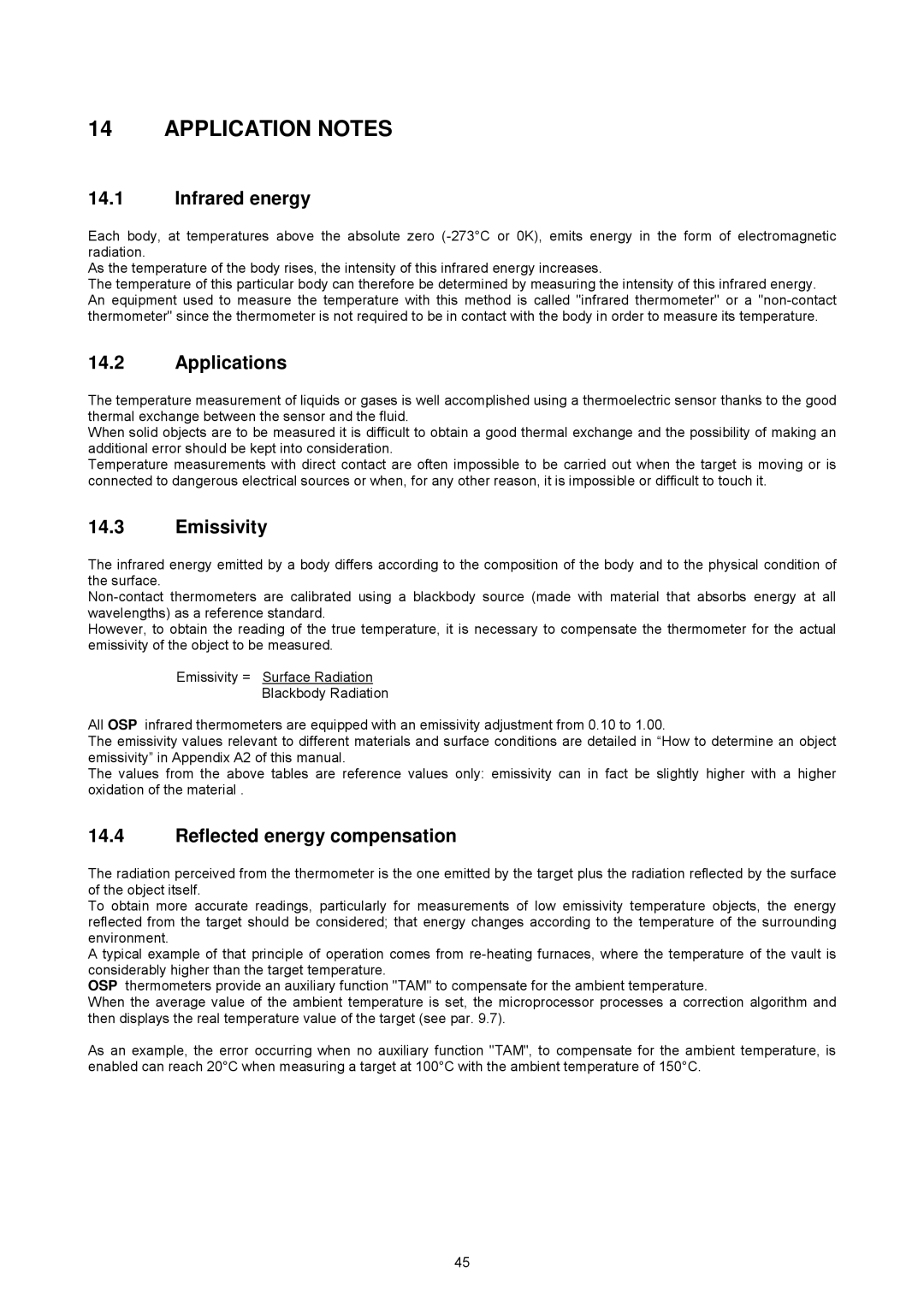14 APPLICATION NOTES
14.1Infrared energy
Each body, at temperatures above the absolute zero
As the temperature of the body rises, the intensity of this infrared energy increases.
The temperature of this particular body can therefore be determined by measuring the intensity of this infrared energy. An equipment used to measure the temperature with this method is called "infrared thermometer" or a
14.2Applications
The temperature measurement of liquids or gases is well accomplished using a thermoelectric sensor thanks to the good thermal exchange between the sensor and the fluid.
When solid objects are to be measured it is difficult to obtain a good thermal exchange and the possibility of making an additional error should be kept into consideration.
Temperature measurements with direct contact are often impossible to be carried out when the target is moving or is connected to dangerous electrical sources or when, for any other reason, it is impossible or difficult to touch it.
14.3Emissivity
The infrared energy emitted by a body differs according to the composition of the body and to the physical condition of the surface.
However, to obtain the reading of the true temperature, it is necessary to compensate the thermometer for the actual emissivity of the object to be measured.
Emissivity = Surface Radiation
Blackbody Radiation
All OSP infrared thermometers are equipped with an emissivity adjustment from 0.10 to 1.00.
The emissivity values relevant to different materials and surface conditions are detailed in “How to determine an object emissivity” in Appendix A2 of this manual.
The values from the above tables are reference values only: emissivity can in fact be slightly higher with a higher oxidation of the material .
14.4Reflected energy compensation
The radiation perceived from the thermometer is the one emitted by the target plus the radiation reflected by the surface of the object itself.
To obtain more accurate readings, particularly for measurements of low emissivity temperature objects, the energy reflected from the target should be considered; that energy changes according to the temperature of the surrounding environment.
A typical example of that principle of operation comes from
OSP thermometers provide an auxiliary function "TAM" to compensate for the ambient temperature.
When the average value of the ambient temperature is set, the microprocessor processes a correction algorithm and then displays the real temperature value of the target (see par. 9.7).
As an example, the error occurring when no auxiliary function "TAM", to compensate for the ambient temperature, is enabled can reach 20°C when measuring a target at 100°C with the ambient temperature of 150°C.
45
